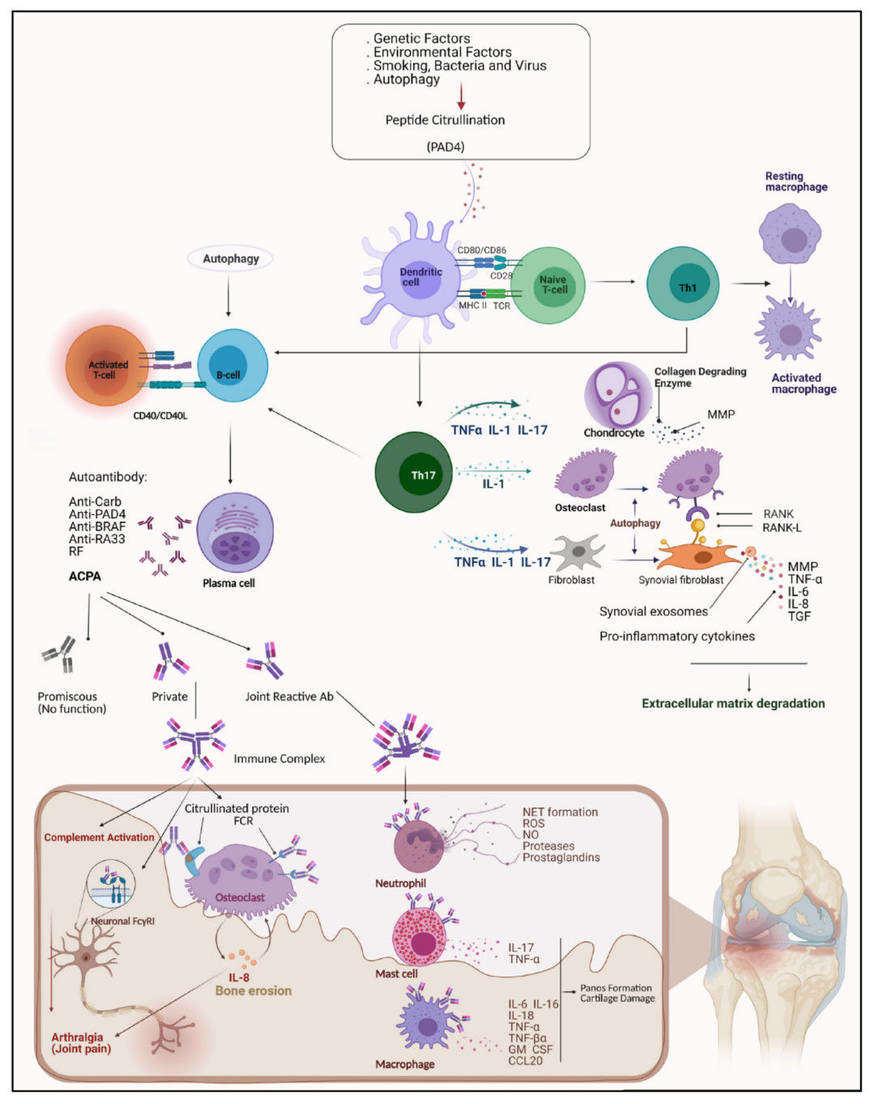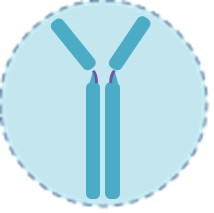Navigating the path to a diagnosis of rheumatoid arthritis (RA) can be complex, as there is no single test that provides all the answers. Instead, clinicians piece together a puzzle using a combination of clinical evaluation, serological biomarkers, and advanced imaging techniques. This comprehensive resource is designed to guide you through that intricate process.
Overview of Rheumatoid Arthritis
Rheumatoid arthritis (RA) is a chronic systemic autoimmune disease primarily characterized by persistent inflammation of the synovial tissue within joints. This inflammation leads to hallmark symptoms including painful joint swelling, morning stiffness, and fatigue. Unlike wear-and-tear arthritis like osteoarthritis, RA is driven by the body's immune system mistakenly attacking its own tissues. If left uncontrolled, the chronic inflammation can cause progressive joint damage, deformity, and loss of function. Beyond the joints, RA is a systemic condition that can affect numerous organs, increasing the risk of cardiovascular and lung disease, emphasizing the importance of early diagnosis and aggressive treatment to manage symptoms and prevent long-term damage.
 Fig.1 The etiology of rheumatoid arthritis (RA). (Mueller A L, et al., 2021)
Fig.1 The etiology of rheumatoid arthritis (RA). (Mueller A L, et al., 2021)
History and Physical Examination of Rheumatoid Arthritis
The history and physical examination are the cornerstone of diagnosing rheumatoid arthritis (RA). The clinical history typically reveals insidious onset of pain, stiffness, and swelling in the small joints of the hands and feet, characterized by a symmetric pattern. A defining feature is prolonged morning stiffness lasting more than 30 minutes to several hours. The physical examination aims to objectively identify synovitis (inflammatory swelling) and tenderness, particularly in the metacarpophalangeal (MCP), proximal interphalangeal (PIP) joints, and wrists. The examiner also assesses for reduced range of motion, joint deformities (which occur in later stages), and extra-articular manifestations such as rheumatoid nodules. This clinical evaluation guides the differential diagnosis and determines the necessity for further serologic testing and imaging to confirm RA.
Serological Biomarkers for Rheumatoid Arthritis Diagnostics
Serological biomarkers are antibodies detectable in the blood that play a pivotal role in diagnosing rheumatoid arthritis (RA), predicting disease severity, and differentiating it from other forms of arthritis. Unlike imaging which reveals structural damage, these biomarkers provide a window into the autoimmune nature of RA, often appearing early in the disease process.
Rheumatoid Factor (RF)
Rheumatoid factor is an autoantibody, primarily of the IgM class, directed against the Fc portion of immunoglobulin G (IgG). It was the first serum biomarker discovered for RA and is widely used due to its availability. However, while a positive RF test supports an RA diagnosis, it is not specific to the disease. It can be present in other autoimmune conditions (like Sjögren's syndrome), chronic infections, and even in a small percentage of healthy individuals, particularly the elderly. Therefore, its results are always interpreted in the broader clinical context rather than being used alone for a definitive diagnosis.
Anti-Citrullinated Protein Antibodies (ACPAs)
Anti-Citrullinated Protein Antibodies represent a family of autoantibodies that recognize proteins that have undergone a post-translational modification called citrullination. This process, which occurs during inflammation, converts the amino acid arginine to citrulline, altering the protein's structure and making it a target for the immune system in susceptible individuals. ACPAs are highly specific for RA (exceeding 95%) and are a cornerstone of modern diagnosis. Their presence is strongly associated with a more aggressive and erosive disease course, making them a valuable prognostic tool.
Cyclic Citrullinated Peptide (CCP)s
The anti-CCP test is the most clinically established and widely used assay for detecting ACPAs. The test uses synthetic, cyclic citrullinated peptides as antigens to capture these antibodies in a patient's serum. The anti-CCP antibody test (often referred to as CCP Antibody or ACPA test) offers superior specificity for RA compared to RF. It is highly valuable as it can appear very early in the disease, even before clinical symptoms become fully apparent. Due to its high positive predictive value, a positive anti-CCP result in a patient with undifferentiated arthritis is a strong indicator that they will develop RA.
Imaging for Rheumatoid Arthritis
Imaging is an indispensable tool in the management of rheumatoid arthritis (RA), serving multiple critical roles: confirming diagnosis, assessing the severity of inflammation and structural damage, monitoring disease progression, and evaluating treatment efficacy. While clinical examination and serologic tests identify the autoimmune process, imaging provides direct visualization of its consequences within the joints and bones. The choice of modality depends on the clinical question, with each technique offering unique advantages in detecting inflammation, cartilage loss, and bone erosions at different stages of the disease.
| Feature |
Conventional Radiography (X-rays) |
Musculoskeletal Ultrasound (MSUS) |
Magnetic Resonance Imaging (MRI) |
| Primary Role |
Detecting established bone damage (erosions), joint space narrowing, and tracking long-term structural progression. |
Detecting active synovitis (inflammation), effusions, and early erosions in real-time; guiding injections. |
Most sensitive for detecting early inflammation (synovitis, tenosynovitis) and pre-erosive bone marrow edema. |
| Key Advantages |
Readily available, low cost, quick to perform, excellent for serial comparison over years. |
Highly sensitive for soft tissue inflammation & early erosions, no ionizing radiation, real-time & dynamic assessment, portable. |
Exceptional soft tissue contrast, highly sensitive for all aspects of disease (early and late), evaluates entire joint. |
| Key Limitations |
Insensitive for early inflammatory changes and pre-erosive disease; only shows late consequences of inflammation. |
Operator-dependent, limited standardization, cannot see deep into joints or visualize bone marrow edema. |
High cost, limited availability, longer scan time, claustrophobia, less practical for multiple joints. |
| Best For |
Baseline assessment and monitoring long-term structural damage and disease progression. |
Point-of-care assessment of multiple joints for active disease, guiding aspiration/injection. |
Early diagnosis when clinical suspicion is high but other tests are negative, and for evaluating complex or deep joints. |
Future of Rheumatoid Arthritis Diagnostics
The future of rheumatoid arthritis (RA) diagnostics is shifting towards earlier and more precise detection, leveraging advancements in multi-biomarker panels, artificial intelligence (AI)-enhanced imaging analysis, and molecular profiling to identify pre-clinical or early-stage disease. Integration of genetic, proteomic, and metabolic data will enable stratified diagnoses, predicting disease severity, progression, and treatment responsiveness, while tools like ultrasound and MRI, augmented with AI, will improve sensitivity for detecting subclinical inflammation and erosion risk. These innovations aim to transition diagnostics from reactive confirmation to proactive, personalized prediction, ultimately delaying or preventing irreversible joint damage.
Leveraging emerging rheumatoid arthritis (RA) biomarkers, Alta DiagnoTech is dedicated to providing precise IVD kits to enhance diagnostic convenience, sensitivity, and specificity. If you have related needs, please feel free to contact us for more information or product support.
Reference
- Mueller A L, Payandeh Z, Mohammadkhani N, et al. Recent advances in understanding the pathogenesis of rheumatoid arthritis: new treatment strategies[J]. Cells, 2021, 10(11): 3017.
This article is for research use only. Do not use in any diagnostic or therapeutic application.



 Fig.1 The etiology of rheumatoid arthritis (RA). (Mueller A L, et al., 2021)
Fig.1 The etiology of rheumatoid arthritis (RA). (Mueller A L, et al., 2021) 


